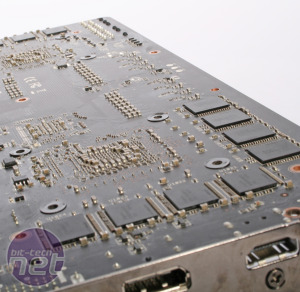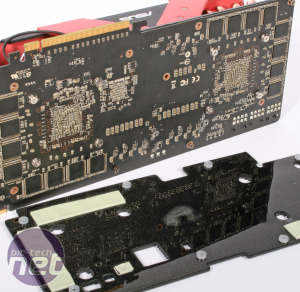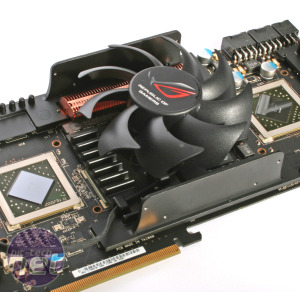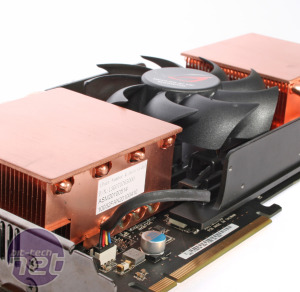
Asus Ares Performance Analysis
There was no doubt that the Ares was going to be a juggernaut of a card; the real question was whether or not it could outperform a stock HD 5970 by enough to justify its price tag, and how it fared against the higher clocked Sapphire Toxic card. We should mention at this point that while we tested the Ares and the HD 5970 with the current 10.6 version of Catalyst, the figures for the Toxic card were acquired using Catalyst 10.3As expected the Ares outperformed a stock HD 5970 at every resolution and setting in Dirt 2, beating it by 12fps at 2,560 x 1,600 with 4x AA enabled. The bad news for the Ares, though, was that the Toxic was quicker at resolutions of 1,680 x 1,050 and 1,920 x 1,200. Interestingly the Ares pulled ahead of the Sapphire card by a small margin at 2,560 x 1,600 - most likely due to its more recent driver.
If there have been optimizations built into the 10.6 driver they don’t make a difference in STALKER as the Ares lost out to the Toxic at every resolution. At 2,560 x 1,600 for example the Toxic card achieved minimum and average framerates of 61fps and 80fps respectively compared to the 52fps and 70fps of the Ares card. If we put our perspective hats on for a moment though we can see that all three of the 5970s (stock, Toxic and Ares) have more than enough horsepower to play STALKER at any resolution, with all settings set to maximum.


As with most dual GPU cards, space on the PCB is at a premium so some of the RAM is mounted on the rear of the card. Click to Enlarge
Crysis proved to be more of a test for the three cards and the Ares returned minimum framerates that were consistently 12 to 15 per cent higher than those of a stock HD 5970. This is a healthy margin and better than the 2 to 5 per cent increase we typically see from pre-overclocked cards. This margin proved key at 1,920 x 1,200 with 4x AA as these settings were just below what we’d consider playable on a stock HD 5970 but smooth and enjoyable on the Ares. The Ares also managed to keep up with the Toxic in Crysis, with the gap between the two cards never being more than 3fps at any time.
Things went startlingly wrong for the Ares in Bad Company 2, as its frame rate results were about 30 per cent below where we expected them to be. After a little investigation however we found that ATI accidentally left out a key optimization in its Catalyst 10.6 release, hobbling HD 5970 performance in Bad Company 2. We should clarify that this was a mistake by ATI, not Asus, and affects all HD 5970s running the 10.6 version of Catalyst.


The cooler is almost excessively huge but you wouldn't expect anything less for £1,200. Click to Enlarge
We did eventually find a hotfix for the problem but it wasn’t readily available on either ATI or Asus’s site which is disappointing. The hotfix did the trick though and once we'd applied it we saw frame rates jump by around 50 per cent. At 1,920 x 1,200 with 4x AA enabled for example we saw average framerates rise from 65fps to 101fps and minimum framerates jump from 40fps to 61fps. The hotfix also extended the gap between the Ares and a stock card with the Ares pulling out a lead of 8fps at 2,560 x 1,600 with 4x AA. If you're lucky enough to own a HD 5970 based card and you need the hotfix it can be found here.
With two overclocked GPUs on-board, power consumption was always going to be high and we weren’t surprised to see our test system draw a whopping 439W from the wall under load - almost 80W more than with a stock HD 5970. We were surprised however by the sound the cooler produced, which was akin to the noise likely to be produced should anyone ever try to force a hair dryer and a vacuum cleaner to mate.

MSI MPG Velox 100R Chassis Review
October 14 2021 | 15:04








Want to comment? Please log in.